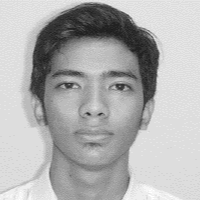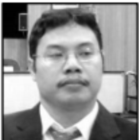International Journal of Computer Network and Information Security (IJCNIS)
IJCNIS Vol. 7, No. 2, 8 Jan. 2015
Cover page and Table of Contents: PDF (size: 1004KB)
Augmented Reality Mobile Application of Balinese Hindu Temples: DewataAR
Full Text (PDF, 1004KB), PP.59-66
Views: 0 Downloads: 0
Author(s)
Index Terms
Augmented reality, 3 dimension, temple, bali, smartphone, androi
Abstract
Augmented reality is a visual technology which combines virtual objects into the real environment in real time. E-tourism in Bali needs to be optimized, so that information technology can help tourists and provide new experiences when traveling. Generally, tourists wish for gaining information in an attractive way about visiting tourism objects. Nowadays, mobile-based application programs that provide information about tourism objects in Bali are rarely found. Therefore, it is important to develop an application which provides information system about tourism objects, especially about the Tanah Lot temple. By implementing augmented reality technology, which grows rapidly all over the world, the application of DewataAR can show 3 dimensional objects, video, and audio information of the temples. The application works by scanning brochure of tourism object by using an Android smartphone or tablet, then it can display 3 dimensional objects, video, and audio information about those tourism objects. Hence, augmented reality can be alternative media for promoting tourism object attractively for tourists and also be able to develop tourism in Bali.
Cite This Paper
Adi Ferliyanto Waruwu, I Putu Agung Bayupati, I Ketut Gede Darma Putra,"Augmented Reality Mobile Application of Balinese Hindu Temples: DewataAR", International Journal of Computer Network and Information Security(IJCNIS), vol.7, no.2, pp.59-66, 2015. DOI:10.5815/ijcnis.2015.02.07
Reference
[1]Chris D. Kounavis, “Enhancing the tourism experience through mobile augmented reality: challenges and prospects”, 2012.
[2]Azuma, R.T. et al, “Indirect augmented reality”, United State: Nokia Research Center Hollywood, 2011.
[3]DroidAR, (2013), “DroidAR Augmented Reality Framework”. Last accessed on 21/09/2013 via http://github.com/bitstars/droidar/.
[4]Layar, (2013), “Layar Reality Browser”. Last accessed on 30/09/2013 via http://www.layar.com/.
[5]Yu D, Jin JS, Luo S, Lai W, Huang Q, “A useful visualization technique: a literature review for augmented reality and its application, limitation and future direction”, Visual Information Communication: Springer US, pp. 311‐37, 2010.
[6]Christine Perey, (2013), “Basel Augmented Reality Tourist Guide”. Last accessed on 22/10/2013 via http://www.perey.com/AugmentedRealityForBasel/.
[7]Brothers and Sisters Creative Limited, (2014), “Museum of London: Streetmuseum”. Last accessed on 15/01/2014 via http://www.museumoflondon.org.uk/Resources/app/
you-are-here-app/index.html.
[8]Fritz F, Susperregui A, Linaza M. (2005), “Enhancing cultural tourism experiences with augmented reality technologies”, 2005.
[9]Sylva, R., et al, “Introduction to augmented reality”, Brazil: National Laboratory of Scientific Computation, 2005.
[10]Raghav Sood, “Pro android augmented reality”, 2012.
[11]Vuforia, (2013), “Developing with vuforia | vuforia developer portal”. Last accessed on 12/10/2013 via http://developer.vuforia.com/resources/dev-guide/getting-started.
[12]L. Madden, “Augmented reality browsers for smartphone: programming for junaio, layar and wikitude”, 2012.
[13]Vuforia, (2013), “Natural features and rating”. Last accessed on 23/12/2013 via https://developer.vuforia.com
/resources/dev-guide/natural-features-and-rating.
[14]Adeel Rafiq,Bilal Ahsan. “Secure and Dynamic Model for Book Searching on Cloud Computing as Mobile Augmented Reality”, 2014.
[15]Jyh-Horng Lin. “Design and Implement Augmented Reality for Supporting Driving Visual Guidance”, 2011.


